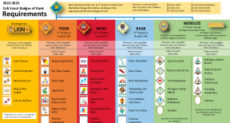In the last post I opened the topic of how to have effective meetings of your troop or pack committee. Meetings are not effective if they are a random discussion on random topics among whoever bothers to show up, when they show up. You can learn techniques for being effective in your role as committee chair and for accomplishing real results within an efficient time frame.
First, we must understand why we hold meetings. While we are inclined to think that the purpose of meetings is to get things done, consider this: Nothing happens in meetings!! Action on agenda items only takes place after the meeting. The purposes of a meeting are to review what’s been done since the last meeting, to discuss what we’re going to do in the future, decide who is going to do it, and figure out how we’ll know when it’s done.
Sometimes it’s desirable to consider whether it’s necessary to have a meeting at all. If there’s nothing to report, discuss or decide, you don’t need to meet. Minor items not needing group consensus, such as information gathering or prearranged tasks, can be dealt with in person or via phone or e-mail. If your troop slows down in the summer, you probably don’t need to hold committee meetings each month in June, July or August. This also applies if many of your committee members are away or likely to be unavailable.
What do we generally need to accomplish in a committee meeting? Typically, we review the previous meeting and get reports from our committee members – treasurer’s report, equipment status, advancements, outdoor, membership, and whatever other committee positions you have. We talk about leftover items from the previous meeting with an eye toward closing them out, and bring up new business that we need to discuss or decide on now or in the coming months. Occasionally we may have a working or planning session too.
The essential elements for a successful meeting, as I mentioned last time, are to have an agenda, and start and end on time. Having an agenda is necessary to serve as a road map for the meeting. Starting and ending on time provides a means for ensuring that everything gets covered by containing the dialogue and constraining discussion to the topic at hand, and is respectful of those in attendance.
Next time we’ll discuss what makes an effective committee meeting, including the things we need to do to prepare.
Next: Planning committee meetings
Previously: Effective committee meetings: Introduction
This post first appeared on Bobwhite Blather.



